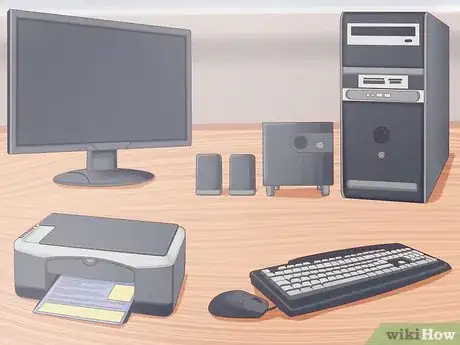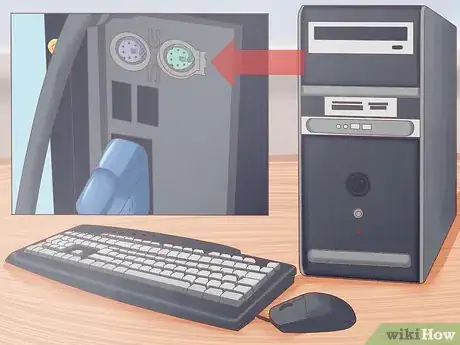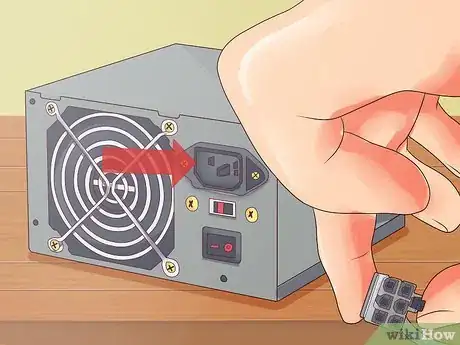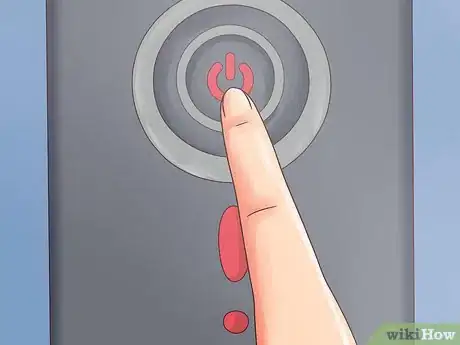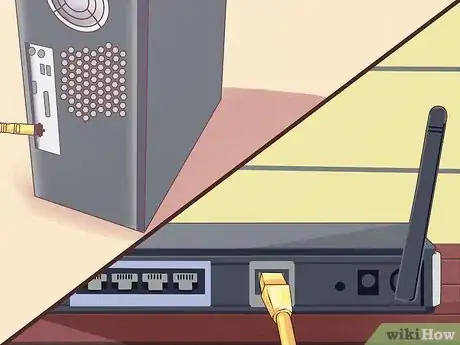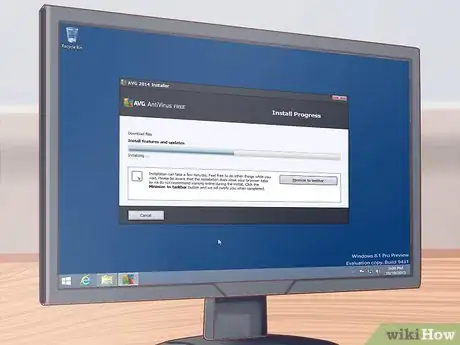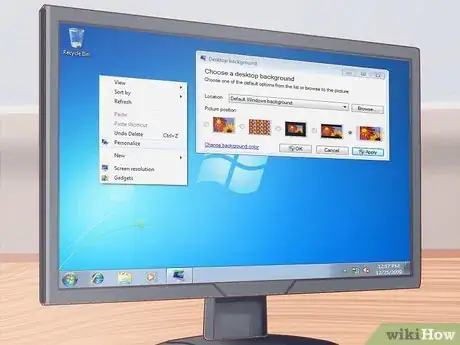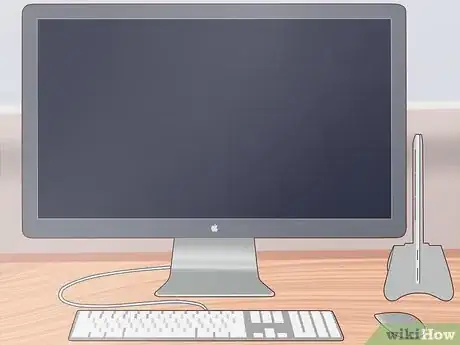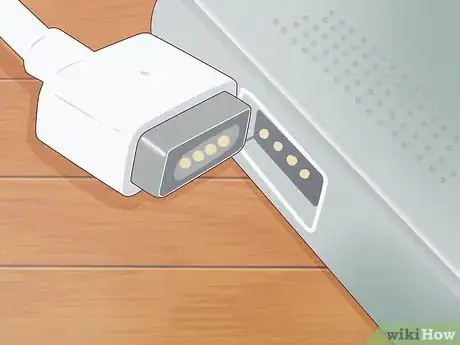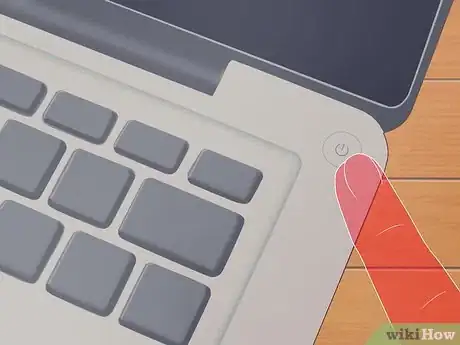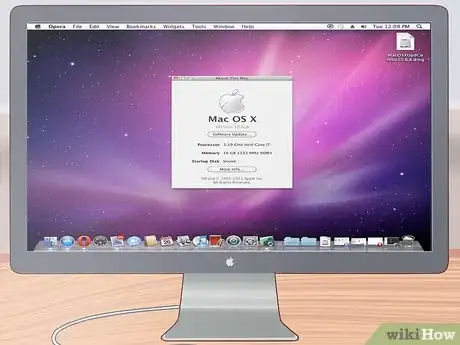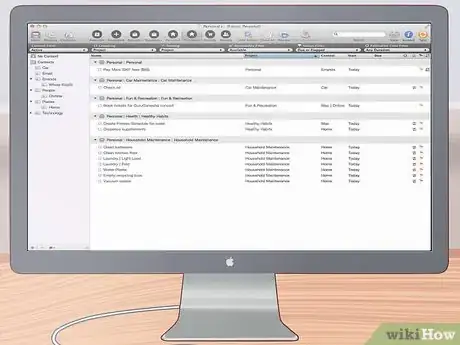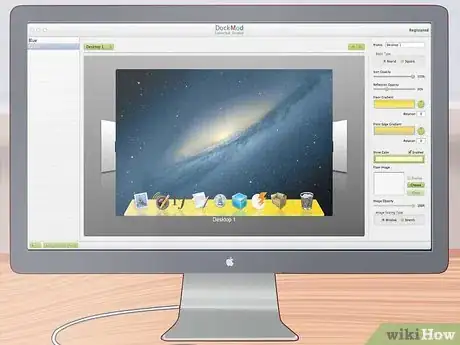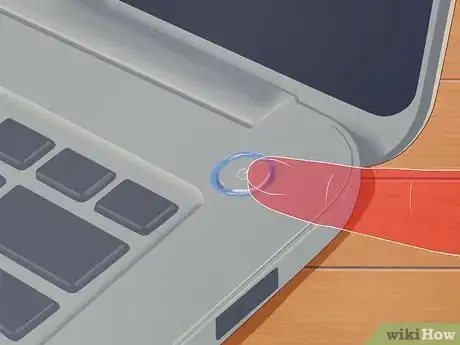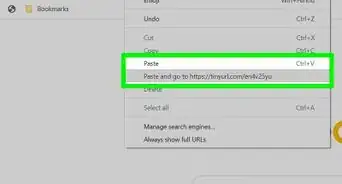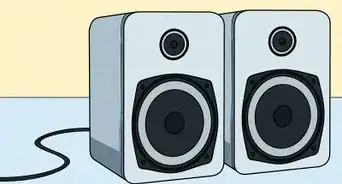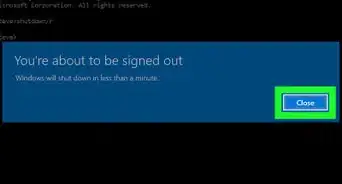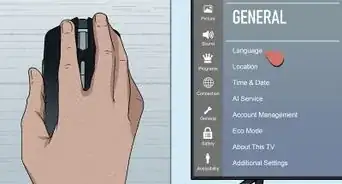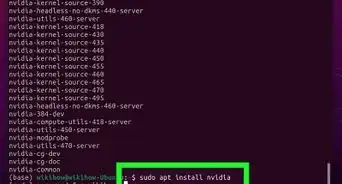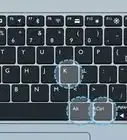This article was co-authored by Luigi Oppido. Luigi Oppido is the Owner and Operator of Pleasure Point Computers in Santa Cruz, California. Luigi has over 25 years of experience in general computer repair, data recovery, virus removal, and upgrades. He is also the host of the Computer Man Show! broadcasted on KSQD covering central California for over two years.
The wikiHow Tech Team also followed the article's instructions and verified that they work.
This article has been viewed 306,683 times.
Just ordered a shiny new computer? Whether you're setting up a Windows desktop, a Mac or MacBook, or a Windows laptop, there are a few things you'll need to take care of before you start surfing the internet or playing your new games. Ensuring that your hardware is properly connected and that you have all the latest updates installed will help make your new computer experience the best it possibly can be.
Steps
Setting up a Windows Desktop
-
1Unpack your components. Depending on where you purchased your computer and what options you selected, you may or may not have the following items:
- Computer tower - This may be all you have if you just purchased a tower. If that's the case, you will need to obtain a monitor, mouse, and keyboard before you can use the computer.
- Monitor - Not all computers come with a monitor. If you're upgrading your computer, you can usually use your old monitor.
- Mouse and keyboard - Most complete systems come packed with both of these, though you may want to consider upgrading for higher-quality peripherals with better ergonomics
- Speakers - These are sometimes built into monitor, and are not always included.
- Printer - Some systems come packaged with a printer, though typically this is purchased separately.
-
2Place the tower. Place your computer tower near its intended location with enough room for all of the fans to move air. Towers typically have fans on the rear of the case, and sometimes have fans on the sides, front, and top. Avoid placing the tower between sets of drawers or inside of a cabinet. If you are using your computer as a home theater PC, make sure that its spot in the home theater cabinet has plenty of air on all sides, and that the cabinet is not enclosed.Advertisement
-
3Connect the monitor to the tower. Plug the monitor or TV into one of the monitor ports on the back of the tower. Most modern computers have an HDMI port, which is the easiest to connect. Modern monitors typically HDMI connections, but some older ones use VGA or DVI.
- The monitor will also need to be plugged into a power outlet.
Tip: If you have a dedicated graphics card, ensure that your monitor is connected to the graphics card and not the motherboard. You will not be able to take advantage of the graphics card unless the monitor is attached to it. The monitor ports for your dedicated card will be located lower on the back of the tower.
-
4Plug in the mouse and keyboard. Virtually all mice and keyboards plug in via USB. If you are setting up an exceptionally old PC, you may need to connect the mouse and keyboard via the PS/2 connectors. These are typically located at the top of the back of the tower, and are color coded to match the keyboard and mouse plugs.
-
5Connect any speakers. Plug your speakers into the back of the computer using the color codes as guides. Ensure that all the channels are placed on the correct sides, and that the speakers are plugged into an outlet if necessary.
- See this guide for more details on setting up computer speakers.
-
6Plug the tower into an outlet. If you can, plug it into a surge protector or uninterruptible power supply (UPS). This will help protect the computer in the event of a power surge or power loss.
- You may need to flip the switch on the power supply to ON. The switch is usually located near the power cable.
-
7Turn on the computer. Press the Power button on the front of the computer to turn it on. If you bought the computer with an operating system such as Windows or Linux preinstalled, you will be guided through the first-time setup process for the operating system. Follow the prompts on the screen to enter your location and create your user account. If your computer did not come with an operating system preinstalled (this is rare), you will need to install it yourself.
- See this guide for details on installing Windows.
-
8Connect to a network. Before you can download any programs or start using the internet, you will need to connect your computer to a network. You can either connect wirelessly if you computer has a wireless network card, or you can connect to your router or modem via Ethernet.
- See this guide for details on setting up a wireless connection.
- If you want to connect via Ethernet, connect the Ethernet cable to your computer and to your router or modem. You won't need to perform any additional setup. See this guide for details.
-
9Download any updates. Chances are that your installed operating system and programs have been updated since the computer was built. You may be prompted to download and install updates, which is essential for keeping your computer secure and stable.
- See this guide for details on installing the latest Windows updates.
- You may be prompted to restart your computer to complete the update process.
- Updating your computer is extremely important to keep you safe when browsing the internet. PCs are a homogenization of all sorts of different parts and pieces, and the operating system's manufacturers are always working hard to make sure that everything works together.
-
10Install your essential programs. Now that you are connected to the internet and Windows has been updated, you can start installing your essential programs. If you're upgrading computers, don't just install all the old programs you used to have installed. Instead, take some time to evaluate what you really need. Only installing the essentials will help keep your computer running smoother.
- Antivirus - This should be the first program that you install, no matter what. An antivirus helps protect your computer against malware and other malicious software, and is essential if your computer is connected to the internet. See this guide for details on installing antivirus software.
- Favorite browser - Windows comes installed with Internet Explorer, but many people prefer other browsers. There are a variety to choose from, including Chrome, Firefox, and Opera.
- Word processor/productivity - Most people use their computers as a home office, which includes installing a word processor and possibly a spreadsheet program. Microsoft Office is designed to integrate into Windows, and you may have a trial already installed on your computer.
- Games - Everyone likes to relax once in a while, so consider installing a game or two! Windows supports the most games out of any operating system, and there are countless ways you can find and purchase them. Some of the most popular storefronts include Steam, GOG, Origin, and Desura.
-
11Personalize the computer. Once all the boring stuff is out of the way, you can start making your new computer yours. You can change your desktop background, install new cursors, change the fonts, or even completely change the way Windows is organized using special software.
- See this guide for details on completely customizing your Windows desktop.
Setting up a Mac Desktop or MacBook
-
1Unpack and connect your components. Most Mac desktops are self-contained units that include everything within the monitor. You will simply need to plug the monitor unit to the power outlet, and connect the mouse and keyboard to the monitor via USB.
-
2MacBooks just need to be plugged in to charge the battery. It can be turned on any time if it is plugged in.
-
3Power on the Mac. You will be guided through the Setup Assistant process, which will configure your Mac for first-time use. Follow the instructions on each screen to set your location and language settings and create a new account.
-
4Migrate your old files. If you used a Mac before, you can use Setup Assistant to migrate your files and settings over. You can migrate virtually anything over, using a wireless connection, USB, Ethernet, or FireWire.
- In general, it is recommended that you only transfer your essential files. Any apps you used should be reinstalled. This will lead to better performance, as you won't migrate anything over that slowing down your previous system.
-
5Connect to a network. Before you can download any updates or apps, you will need to connect to a network. Most Macs have WiFi built in, allowing you to connect to your home, school, or office wireless network. Some Macs also have Ethernet ports which allow you to connect directly to a modem or router using an Ethernet cable
- See this guide for detailed instructions on connecting to a wireless network.
- If you are connecting via Ethernet, simply connect the Ethernet cable to the Ethernet port on the back of your Mac, and then connect the other end to an available port on the router. Your Mac will do the rest.
-
6Update OS X. After connecting to a network, the first thing you should do is make sure that all the latest updates are installed. Chances are that updates to Mac OS X and your preinstalled programs have been released since the time your Mac was packaged, so be sure to grab all the available updates before diving in.
- To check for and install any updates, click the Apple menu and select "Software Update". After the program takes a moment to check for available updates, you will be provided a list. Confirm that you want to install the updates.
- You may need to restart your Mac during the update process.
-
7Install your essential apps. Now that your Mac is connected and updated, you can start installing the apps you need on a daily basis. Installing apps is simple on a Mac. Open the DMG file that you download, and then drag the application file into the Applications folder.
- Productivity/Organizational - Mac has a host of productivity and organizational software available. Everything from day planners to full office suites can be found on the Mac Store. Microsoft has a version of Office available for Mac as well, and Apple has its own office suite in Pages and Numbers.
- Browser - Your Mac comes with Safari installed, but you can install other browsers if you prefer. Chrome allows you to sync your browser settings across any device you use it on, making it great if you have multiple computers with different operating systems. Firefox is another popular option, and both are free.
- Multimedia - Macs are known for their multimedia capabilities, so consider installing some good multimedia apps. VLC player is an essential video player, and there are tons of music, video, and image editing programs available.
- Games - More and more games are making their way over to OS X as time goes by. Steam is now a very popular and easy way to access a variety of Mac games, and there are lots to choose from on the Mac Store as well.
- Utilities - Macs allow you to have a lot of control over the system, and there are many utilities that can make your life a little easier. From storage management to system automation, there is a lot to choose from.
-
8Customize your desktop. You can change your desktop wallpaper to make your computer more personal. There is also software, such as DockMod, that allows you to customize the Dock, while programs like Desktop Groups allow you to organize the icons cluttering up your desktop.
- You can use the Dashboard to add widgets to OS X. These are tools that you can quickly access without having to start a program. To access the Dashboard, click the Dashboard icon in the dock. Add widgets by clicking the "+" button in the lower-left corner of the Dashboard, and then clicking "More Widgets...". This will open the Widgets download page where you can browse through all the available widgets.
Setting up a Windows Laptop
-
1Unpack your components. Your laptop should come with a power cable and a battery. Some laptops may have the battery already installed, while other will need to have the battery inserted after you unpack it.
-
2Plug in the laptop and power it on. Most laptops don't have a full charge when you receive them. You may want to let the battery charge completely before turning it on for the first time, but you can plug it in and turn it on anytime.
-
3Connect to a network. Before you can download any programs or start using the internet, you will need to connect your computer to a network. Most laptops connect wirelessly, though some laptops will have an Ethernet port that allows you to connect via Ethernet cable.
- See this guide for details on setting up a wireless connection.
- If your laptop doesn't have an Ethernet port but you want to connect via Ethernet cable, you can use a USB Ethernet adapter. Plug the USB adapter into a USB port on your laptop and it will be automatically installed.
-
4Download any updates. Chances are that your installed operating system and programs have been updated since the computer was built. You may be prompted to download and install updates, which is essential for keeping your computer secure and stable.
- See this guide for details on installing the latest Windows updates.
- You may be prompted to restart your computer to complete the update process.
-
5Install your essential programs. Now that you are connected to the internet and Windows has been updated, you can start installing your essential programs. If you're upgrading computers, don't just install all the old programs you used to have installed. Instead, take some time to evaluate what you really need. Only installing the essentials will help keep your computer running smoother.
- Antivirus - This should be the first program that you install, no matter what. An antivirus helps protect your computer against malware and other malicious software, and is essential if your computer is connected to the internet. See this guide for details on installing antivirus software.
- Favorite browser - Windows comes installed with Internet Explorer, but many people prefer other browsers. There are a variety to choose from, including Chrome, Firefox, and Opera.
- Word processor/productivity - Laptops are great for doing work on the go, so you'll want to install a word processor and maybe a spreadsheet program. Microsoft Office is designed to integrate into Windows, and you may have a trial already installed on your computer.
- Games - Everyone likes to relax once in a while, so consider installing a game or two! Laptops aren't typically as powerful as desktops, so you may have difficulties running some of the more graphically-intensive games at their highest settings. This certainly isn't true for every laptop though, as some dedicated gaming laptops can keep up with the high-end desktops. Some of the most popular storefronts for games include Steam, GOG, Origin, and Desura.
-
6Personalize the computer. Once all the boring stuff is out of the way, you can start making your new computer yours. You can change your desktop background, install new cursors, change the fonts, or even completely change the way Windows is organized using special software.
- See this guide for details on completely customizing your Windows desktop.
Community Q&A
-
QuestionCan I access my email from my new computer?
 Community AnswerYes. You can access it from almost any device as long as it is connected to internet.
Community AnswerYes. You can access it from almost any device as long as it is connected to internet. -
QuestionHow do I access the Control Panel?
 Community AnswerHold the Start button and press "R." It should open a window that says "Run." Then, type "Control Panel" and press Enter. You can also open your Start menu and search for it there.
Community AnswerHold the Start button and press "R." It should open a window that says "Run." Then, type "Control Panel" and press Enter. You can also open your Start menu and search for it there. -
QuestionHow do I set up a new PC if I don't know the product key?
 Pur3k0912Community AnswerYou can download Windows 10 onto a flash drive for free. However, it will require a code sooner or later. If you bought the computer from a store, I recommend contacting them if it was supposed to come with an operating system but did not. If that does not work, you can find a code for most systems for about $100-130. It is pricey but must be done.
Pur3k0912Community AnswerYou can download Windows 10 onto a flash drive for free. However, it will require a code sooner or later. If you bought the computer from a store, I recommend contacting them if it was supposed to come with an operating system but did not. If that does not work, you can find a code for most systems for about $100-130. It is pricey but must be done.
About This Article
1. Connect the components if it's a desktop.
2. Plug into a power source.
3. Press the power button.
4. Turn on the monitor if it's a desktop.
5. Connect to the internet.
6. Sign in or create an account.
7. Install updates if prompted.
8. Customize your desktop.
